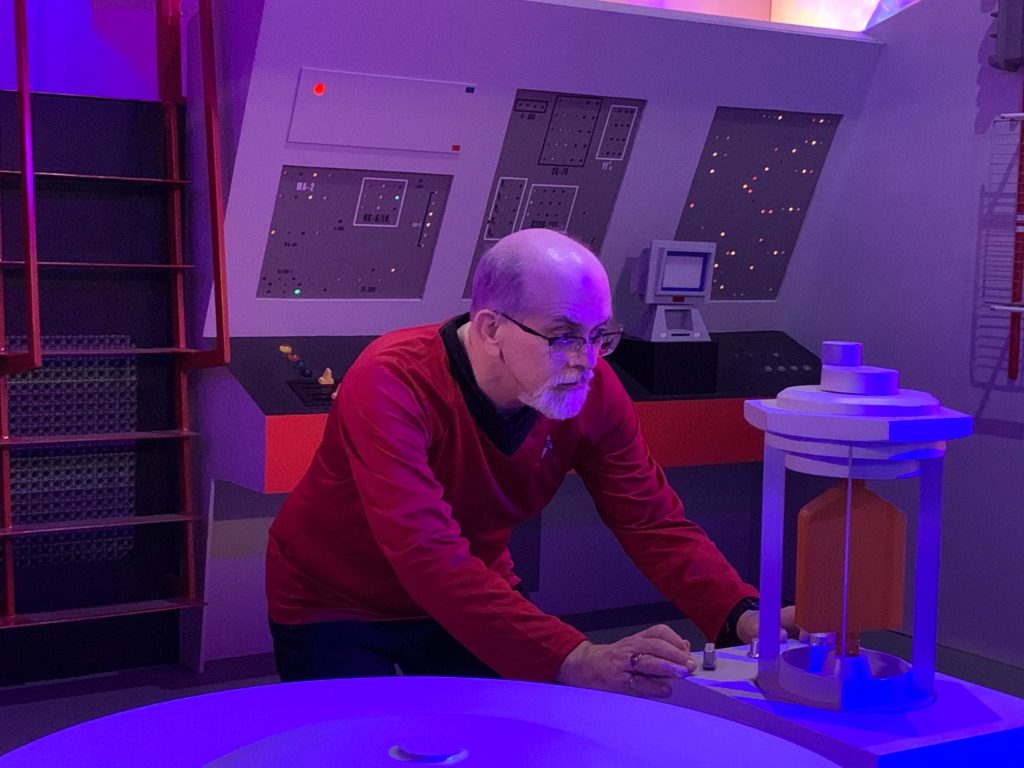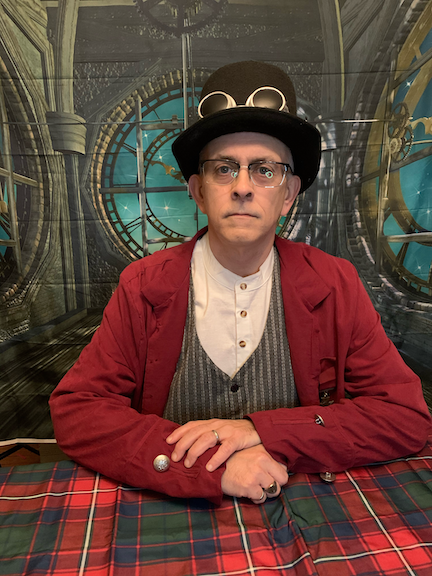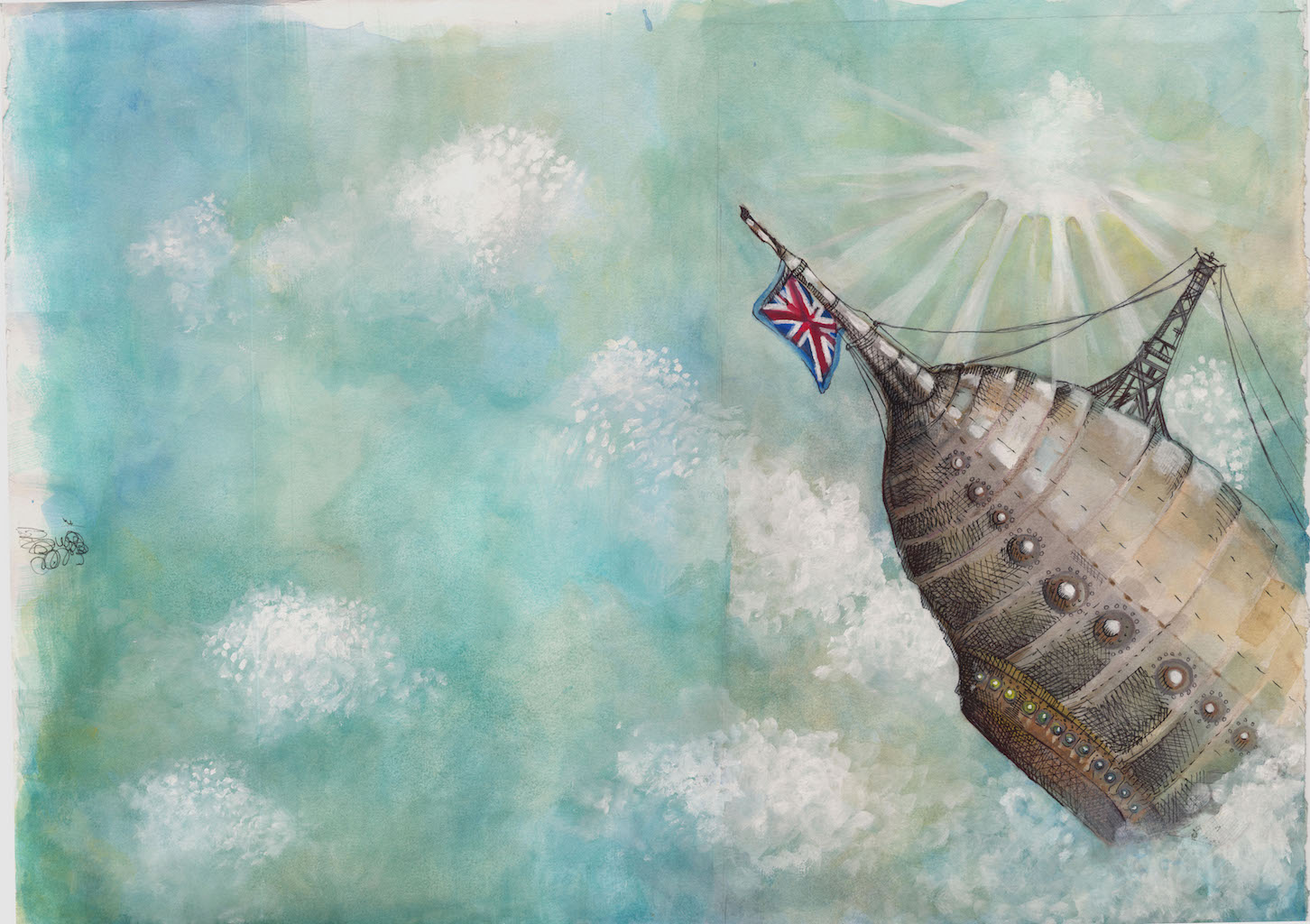From Star Trek to Steampunk
Growing up with Star Trek
The question people always ask an author is, “Where do you get your ideas?”
For me, the answer has always been Star Trek.
I’ve been a fan since childhood. Although I was born just after the Original Series premiered, I remember many Sunday afternoons watching reruns in syndication. I had a set of toy communicators (really just walkie-talkies), a phaser flashlight, and an imagination shaped by starships and strange new worlds.
In college, my love of Star Trek deepened. My roommates and I would tune in every night on WPIX, competing to guess the episode before the opening credits rolled. James Doohan visited campus my freshman year — the first time I met a cast member. By senior year, a new Trek era had begun: The Next Generation.
From there, the obsession only grew. I followed Deep Space Nine, Voyager, and Enterprise. I’ve seen every film more times than I can count (except Star Trek V, for reasons any fan will understand). Conventions brought me face-to-face with Garrett Wang, René Auberjonois, Robin Curtis, and even William Shatner himself. Later, I met Jonathan Frakes, LeVar Burton, and Walter Koenig.
Pilgrimages and Collectibles
In recent years, even vacations have doubled as Star Trek pilgrimages.
- In Seattle, I toured the Museum of Pop Culture’s Star Trek exhibit.
- On a road trip through Iowa, I made a detour to Riverside, Captain Kirk’s future birthplace.
- On a trip to the Finger Lakes, I made a detour to a distillery making as Star Trek themed whiskey.
- In Ticonderoga, NY, I explored the meticulous Star Trek Original Series Set Tour — three times.
My office today is filled with models of the Enterprises, Deep Space Nine, and action figures. The door even bears a Star Trek comm panel and a plaque naming me Chief Engineer of the Enterprise.
From Fan to Creator
So how did I get from Star Trek to steampunk?
In 2012, I discovered NaNoWriMo (National Novel Writing Month). The challenge: write a 50,000-word novel in November. A year later, while watching Star Trek Into Darkness, I found myself asking a question that changed everything:
“What if Scotty were the captain instead of Kirk?”
Of course, I couldn’t actually write a Star Trek novel. But the idea of an engineer thrust into command stuck with me. What’s the Earthbound equivalent of a starship? The answer was obvious: an airship.
Airships could carry explorers into uncharted skies just as starships traveled the galaxy. Ranks and roles mapped naturally from the bridge of the Enterprise to the deck of a dirigible. The seed of my first steampunk story had been planted.
Why Steampunk?
As an engineer by training, I’ve always been fascinated by invention. The Victorian era — with its breakneck technological advances and strict social hierarchies — provided the perfect setting.
Like Star Trek, steampunk is about discovery, duty, and honor. It asks what happens when technology collides with morality and ambition. Where Star Trek’s Federation lives by the Prime Directive, steampunk’s European empires embody the opposite: interference, espionage, and unchecked capitalism. That tension fuels drama.
And then there was my character. If Scotty were captain, he’d be Scottish, an engineer at heart, and pressed into leadership by circumstance. Thus was born Malcolm Robertson of the British Royal Air Service — inspired by Scotty, named partly for Malcolm Reynolds (Firefly), and carrying my great-grandmother’s surname, Robertson.
A New Frontier
From that spark, my novels took flight. What began as a Star Trek-inspired thought experiment became a steampunk saga filled with airships, espionage, and alternate-history intrigue.
Star Trek taught me that storytelling is about exploration — of strange new worlds, yes, but also of ideas, choices, and what it means to be human. In my steampunk novels, I try to capture that same spirit of wonder, transplanted into a different universe.
It turns out, my voyages didn’t end with the stars. They just found a new frontier.



